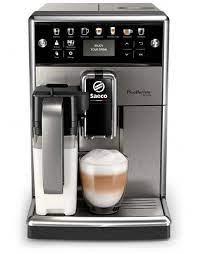The article was first published on the Kluwer Trademark Blog
So you finally got your trademark registration and now you can go ahead and use it, and get back some good revenues out of your hard work. But what if you put your trademark on a product manufactured by a third party? Can you end up being held liable for damages caused by a defect of such product, even though you are not the ‘producer’?
This was in essence what the Court of Justice (CJEU) had to decide on reference from the Finnish Supreme Court in C-264/21 of July 07, 2022, Keskinäinen Vakuutusyhtiö Fennia (Fennia) v Koninklijke Philips NV, and the answer was yes, you can.
The facts go as follows. Saeco International Group SpA and Philips Oy are both subsidiaries of Koninklijke Philips which is the owner of the registered trademarks ‘Philips’ and ‘Saeco’. Saeco manufacturers coffee machines and Philips Oy sells them in the EU under the trademarks ‘Philips’ and ‘Saeco’.

Unfortunately, a fire was caused by one of these coffee machines, and Fennia, an insurance company which compensated a consumer for the damage caused, brought an action against Koninklijke Philips seeking compensation on the basis of liability for defective products under art. 1 and 3(1) of Directive 85/374*, which jointly put the liability of damage caused by defective products on the producer, with art. 3(1) defining the term ‘producer’.
Koninklijke Philips claimed that the action should be dismissed, since it was not the ‘producer’ of the coffee machine at issue.
The CJEU was requested to clarify whether art. 3(1) of Directive 85/374 must be interpreted as meaning that the concept of ‘producer’ requires that the person who has put his name, trademark or other distinguishing feature on the product, or who has authorised those particulars to be put on the product, also presents himself as the producer of that product in some other way.
The CJEU first noted that art. 3(1) of Directive 85/374 contains an alternative, only the first part of which concerns the person who is at least partially involved in the process of manufacturing the product, while the second part refers to a person who presents himself as a producer by putting his name, trademark or other distinguishing feature on the product. Since the definition set out in the second part of the alternative does not include any additional criterion, “it is clear from the wording of that provision that it is the affixing of distinguishing features (emphasis added) by the person whom such features identify or by an authorised person which forms the basis of the status of ‘producer’ within the meaning of that provision” (see §30).
The CJEU further explained that “…by putting his name, trademark or other distinguishing feature on the product at issue, the person who presents himself as a producer gives the impression that he is involved in the production process or assumes responsibility for it. Accordingly, by using such particulars, that person is effectively using his reputation in order to make that product more attractive in the eyes of consumers which, in return, justifies his liability being incurred in respect of that use” (see §34).
All in all, it is yet to be seen if Koninklijke Philips is in the end held liable by the Finnish courts
This decision underlines the serious implications on liability of trademark licensors for defective goods produced by their licensees, and the risk is even higher in those cases where there is little or no quality control on the manufacturing. As the CJEU observed, this extended liability is justified by the fact that trademark owners may use the reputation of their trademarks in order to make the product more attractive in the eyes of consumers and this justifies their liability in respect of that use. In other words, beware, what goes around, turns around.
* Article 1: The producer shall be liable for damage caused by a defect in his product.
Article 3(1): ‘Producer’ means the manufacturer of a finished product, the producer of any raw material or the manufacturer of a component part and any person who, by putting his name, trade mark or other distinguishing feature on the product presents himself as its producer.